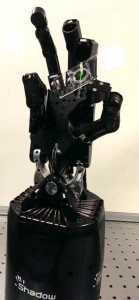The UK’s National Physical Laboratory (NPL), along with IBM and the University of Edinburgh, has developed a new quantum model for understanding water’s liquid-vapour interface according to an April 20, 2015 news item on Nanowerk,
The National Physical Laboratory (NPL), the UK’s National Measurement Institute in collaboration with IBM and the University of Edinburgh, has used a new quantum model to reveal the molecular structure of water’s liquid surface.
The liquid-vapour interface of water is one of the most common of all heterogeneous (or non-uniform) environments. Understanding its molecular structure will provide insight into complex biochemical interactions underpinning many biological processes. But experimental measurements of the molecular structure of water’s surface are challenging, and currently competing models predict various different arrangements.
An April 20, 2015 NPL press release on EurekAlert, which originated the news item, describes the model and research in more detail,
The model is based on a single charged particle, the quantum Drude oscillator (QDO), which mimics the way the electrons of a real water molecule fluctuate and respond to their environment. This simplified representation retains interactions not normally accessible in classical models and accurately captures the properties of liquid water.
In new research, published in a featured article in the journal Physical Chemistry Chemical Physics, the team used the QDO model to determine the molecular structure of water’s liquid surface. The results provide new insight into the hydrogen-bonding topology at the interface, which is responsible for the unusually high surface tension of water.
This is the first time the QDO model of water has been applied to the liquid-vapour interface. The results enabled the researchers to identify the intrinsic asymmetry of hydrogen bonds as the mechanism responsible for the surface’s molecular orientation. The model was also capable of predicting the temperature dependence of the surface tension with remarkable accuracy – to within 1 % of experimental values.
Coupled with earlier work on bulk water, this result demonstrates the exceptional transferability of the QDO approach and offers a promising new platform for molecular exploration of condensed matter.
Here’s a link to and a citation for the paper,
Hydrogen bonding and molecular orientation at the liquid–vapour interface of water by Flaviu S. Cipcigan, Vlad P. Sokhan, Andrew P. Jones, Jason Crain and Glenn J. Martyna. Phys. Chem. Chem. Phys., 2015,17, 8660-8669 DOI: 10.1039/C4CP05506C First published online 17 Feb 2015
The paper is open access although you do need to register on the site provided you don’t have some other means of accessing the paper.
![The centre image shows lysosome membranes and is one of the first ones taken by Betzig using single-molecule microscopy. To the left, the same image taken using conventional microscopy. To the right, the image of the membranes has been enlarged. Note the scale division of 0.2 micrometres, equivalent to Abbe’s diffraction limit. Image: Science 313:1642–1645. [downloaded from http://www.kva.se/en/pressroom/Press-releases-2014/nobelpriset-i-kemi-2014/]](http://www.frogheart.ca/wp-content/uploads/2014/10/Nanoscopy_Nobel-2014-300x95.jpg)
